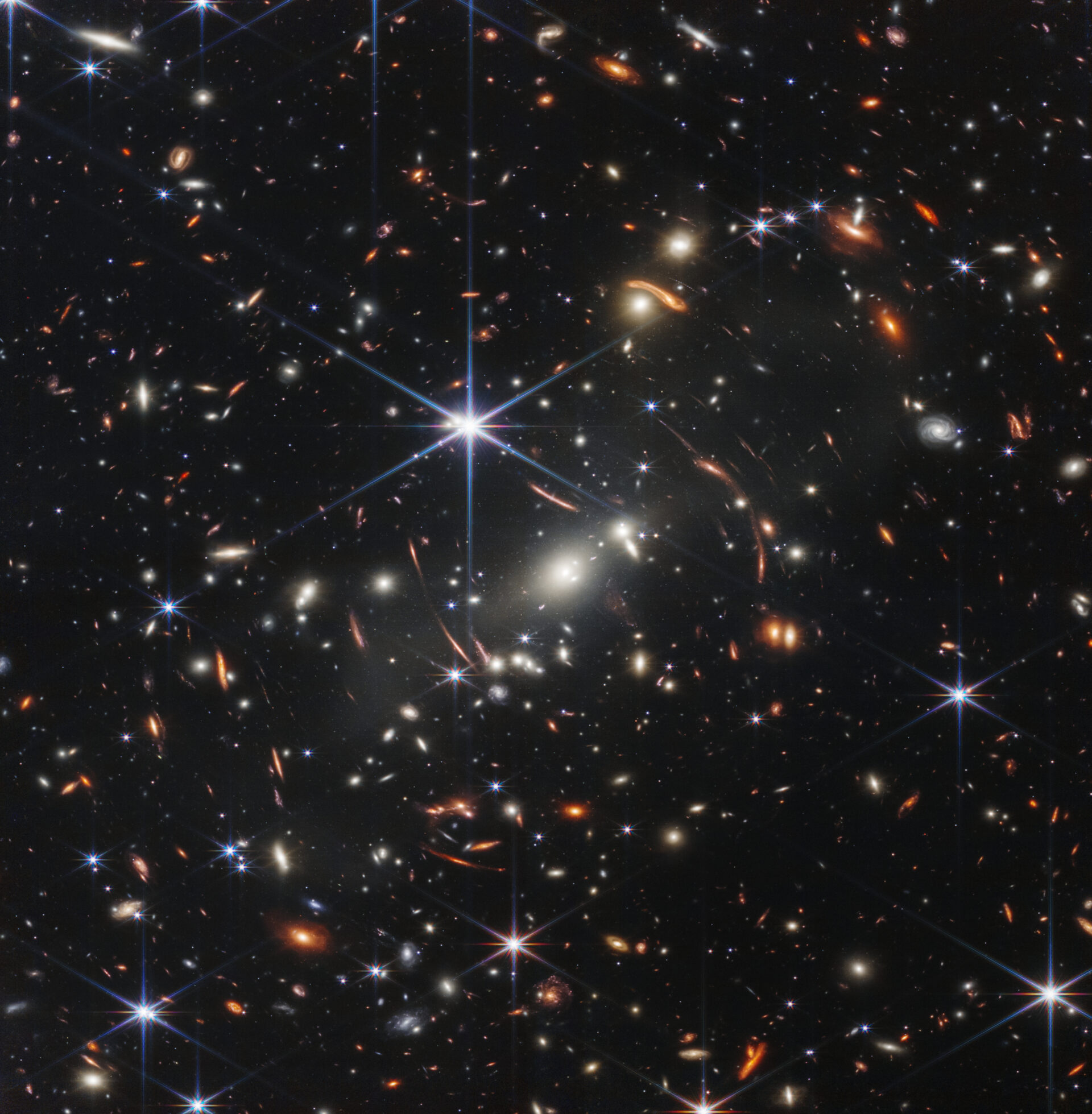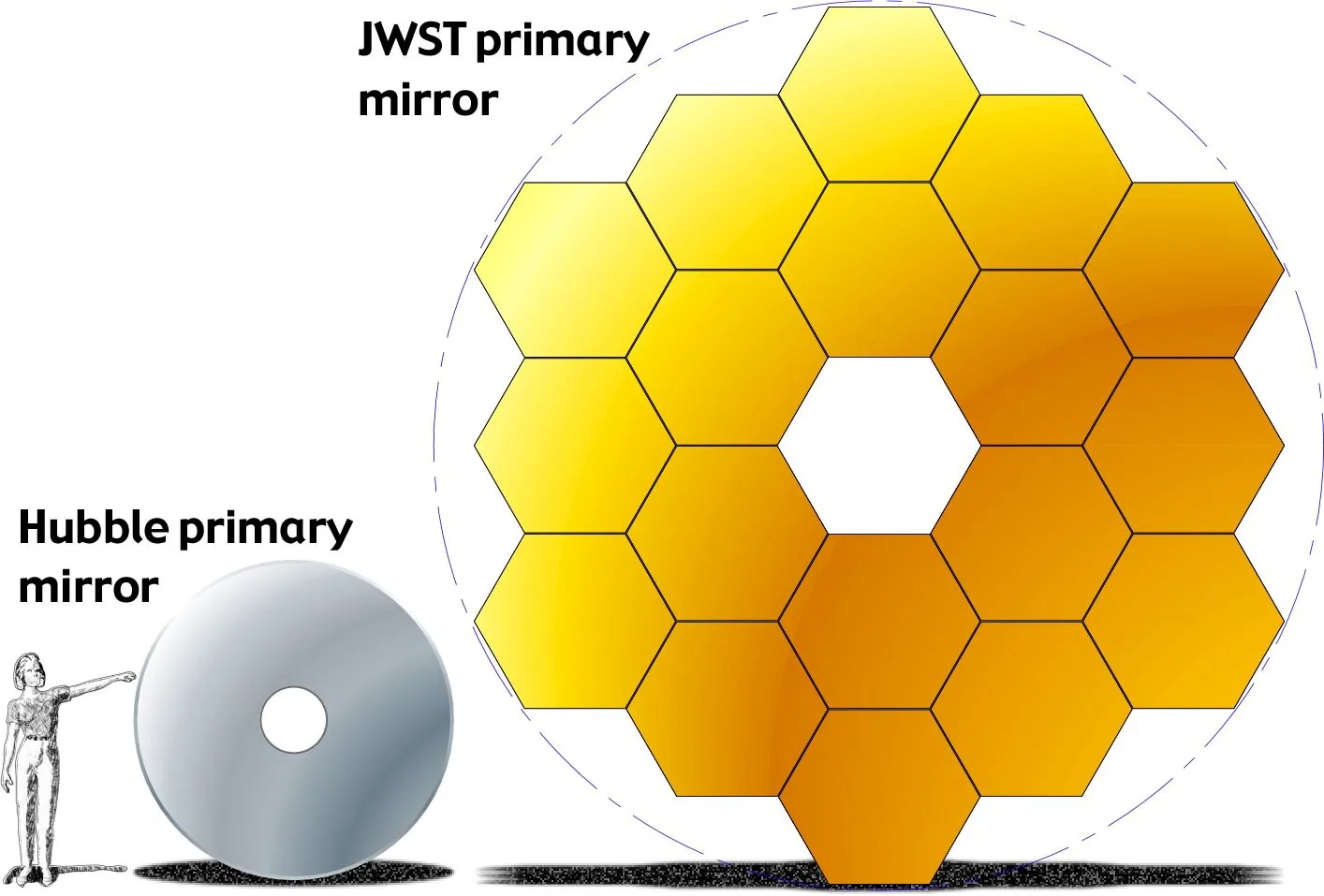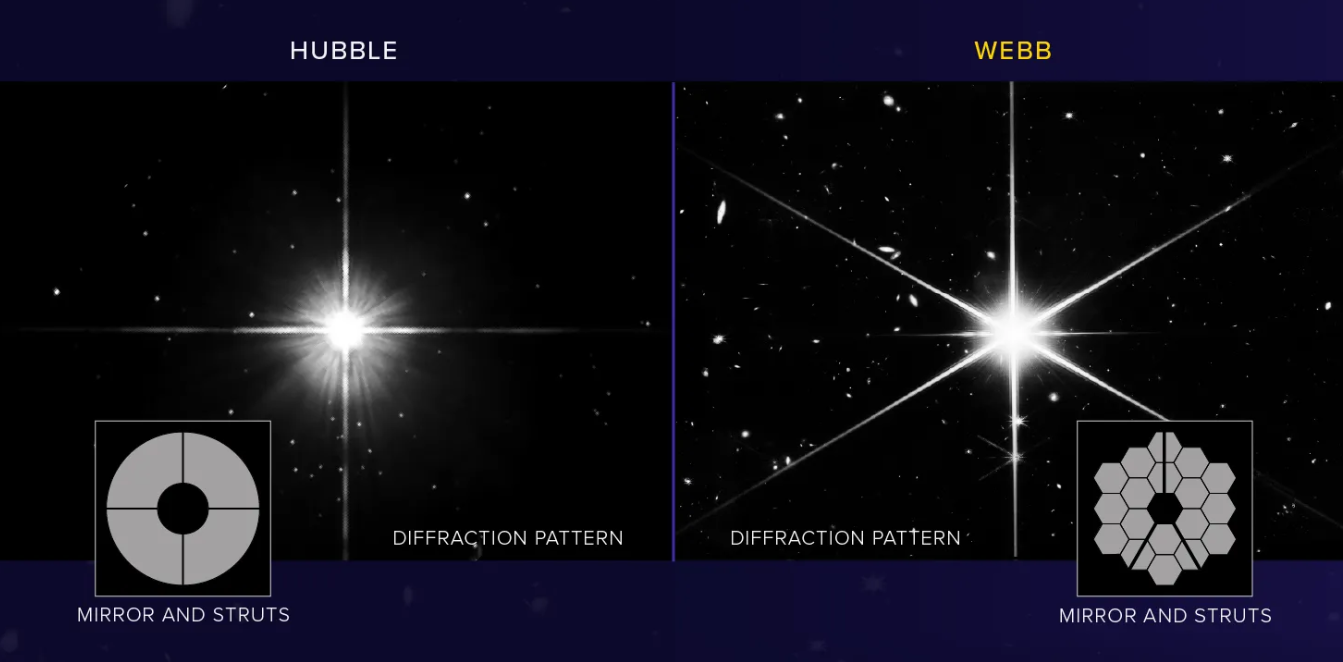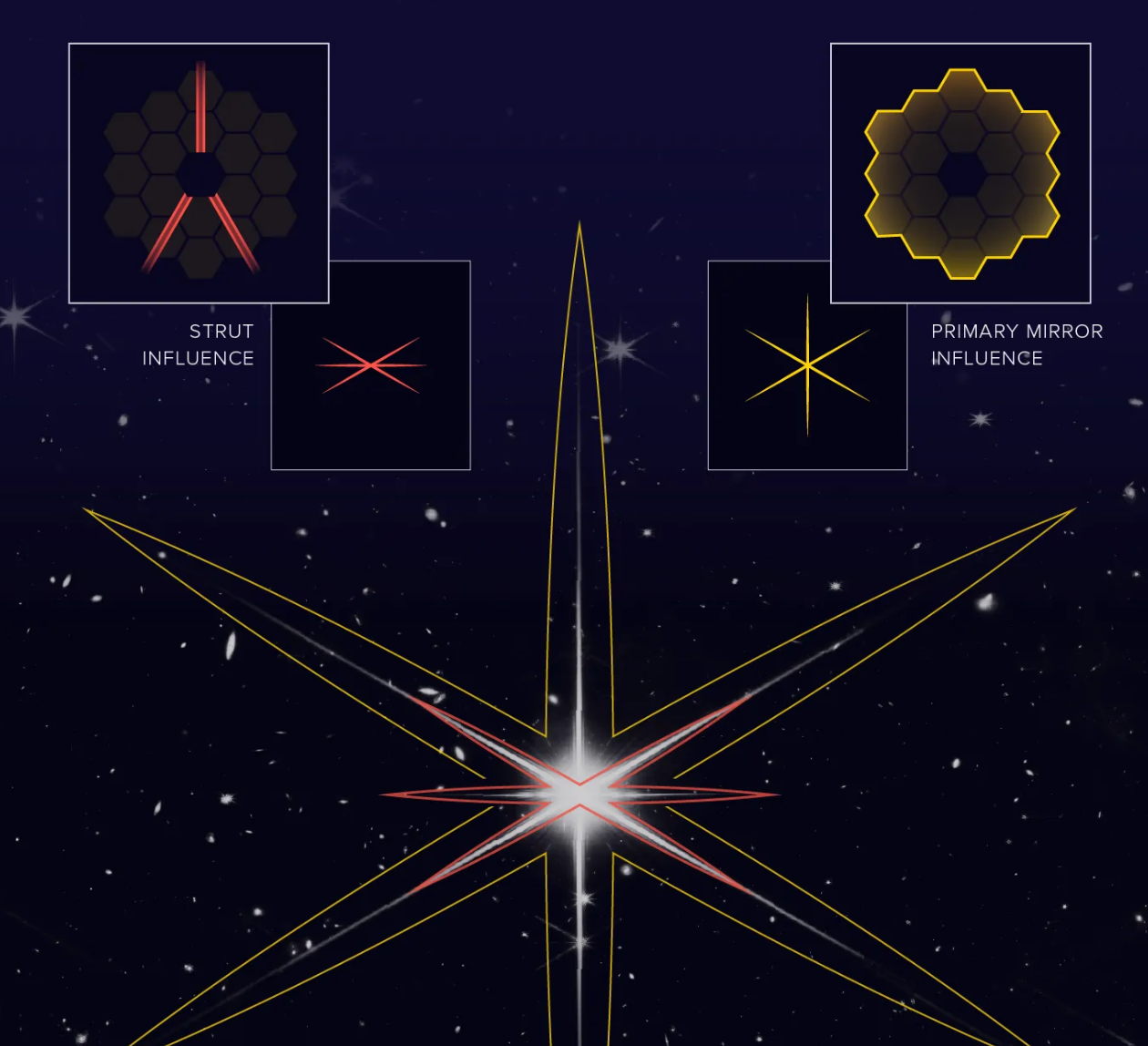Surely you have also noticed how the stars in the first color images of the James Webb Space Telescope look clearer than before. And this is not only due to the increased image quality. It is implied that many bright stars in the photos have very clear “spikes”, or rays, making these luminaries look like Christmas decorations.

But this is not a case of too strong reflection. These are diffraction bursts. If you look closely, you will see that all the bright objects in the JWST images have eight subtle highlights. The two horizontal spikes in the James Webb images can make them very weak, so sometimes it seems as if there are only six of them. Interestingly, the brighter the light, the more noticeable these rays are. And dimmer objects, such as a nebula or a galaxy, usually have no such distortion. This pattern of diffraction bursts is unique specifically for JWST. If you compare the image with its predecessor, you can see that there are only four diffraction bursts in Hubble images compared to eight in JWST.
Image Distortion Equalization
The shape of the diffraction spikes is determined by the telescope hardware. Hubble and JWST are reflector telescopes, which means they collect light from space using mirrors. Reflex telescopes have a large main mirror collecting light and reflecting it back into a smaller secondary mirror. The secondary mirror on space telescopes helps direct this light to scientific instruments that turn it into the beautiful images and data we see now.

Both primary and secondary mirrors contribute to diffraction bursts, but in slightly different ways. The shape of the mirror can lead to flashes of light when light interacts with the edges of the mirror. In Hubble’s case, the mirror is round, so it didn’t add sharpness. But JWST has hexagonal mirrors that create images with six diffraction bursts.

There is also a secondary mirror. Secondary mirrors are smaller than the main ones and are kept at a certain distance from the main mirror with the help of struts. The light passing by these supports diffracts, which leads to the appearance of new spikes, each of which is perpendicular to the support itself. In Hubble’s case, its four stands resulted in the four distinct spikes you see in its pictures. James Webb has three stands holding its secondary mirror, resulting in six more spikes. This amount creates a lot of distortion.

Telescope Feature
To minimize the number of diffraction bursts, James Webb was designed in such a way that the four bursts caused by the supports overlap with the four bursts caused by the mirror. Thus, only eight spikes remain, which will soon become a distinctive feature of the telescope. Now you can differentiate exactly which pictures were taken by Hubble and which ones were taken by James Webb.
From this moment on you will always be able to tell the difference between a Hubble image and a JWST image:
Hubble stars have four spikes in a cross. JWST stars have six in a snowflake. Thank you for your time. pic.twitter.com/BWsv2WqCqD
— Hank Green (@hankgreen) July 12, 2022
Recall that earlier James Webb photographed Jupiter.
Follow us on Twitter to get the most interesting space news in time
https://twitter.com/ust_magazine

